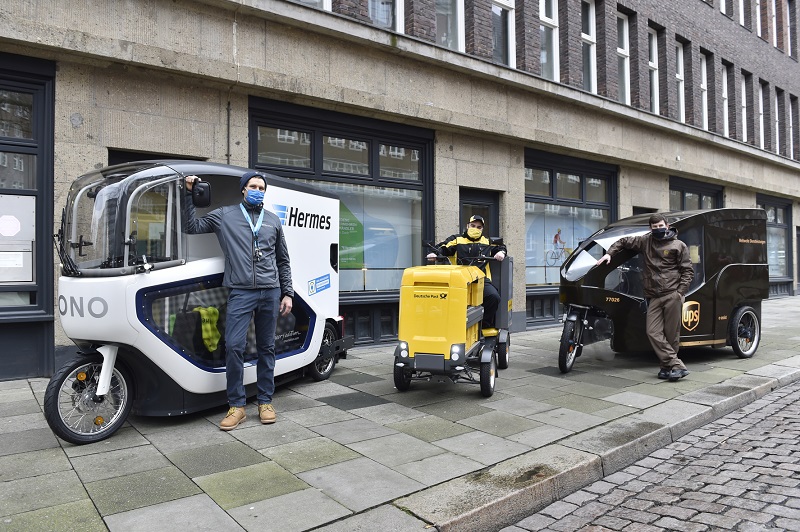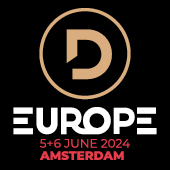B2C parcels boom continues in 2021, say CEP firms

The dramatic growth in B2C parcels is continuing this year with higher volumes and new mini-peaks, according to leading parcel and express operators in Germany.
B2C deliveries soared by nearly 20% to around 2.7 billion shipments in Germany last year, accounting for 56% of the total 4.05 billion volumes in the courier, express and parcels (CEP) market, the latest annual CEP Market Study by KE-Consult for the German Parcels & Express Logistics Association (BIEK) found.
This included an 18.6% increase in domestic B2C parcels, which now have a 68% share of the total parcels market.
Study author Klaus Esser told journalists at a BIEK press conference this week that B2C deliveries could increase by a further 10-11% this year due to continuing e-commerce growth even as shops re-opened. “The high B2C growth rate will slow. The need to order online will be less but growth will continue,” he predicted.
UPS expects B2C and B2B growth
Top carriers confirmed at a separate media event after the study presentation that this strong B2C growth is continuing so far this year, although at a more moderate pace as shops re-open following pandemic lockdowns.
Responding to CEP-Research questions about current market trends, UPS Germany spokesperson Holger Ostwald commented: “Through corona we had a clear acceleration. Of course, people will buy in shops again but after this experience (of e-commerce during the pandemic) many people will continue to purchase online. B2C will not fall back to its former level but will stay at a high level.”
He stressed: “In addition, B2B will certainly grow. There were not so many deliveries to shops during the lockdowns of course, so we expect B2B growth this year, like in the CEP Study forecast.” According to the study, B2B parcel volumes in Germany could recover about 3-4% this year while express & courier volumes could increase about 4-5%.
Hermes predicts high volumes
B2C specialist Hermes is seeing continued strong growth in Germany this year, spokesperson Friedemann König said. “When you look at the first four months of the year, you might think that volumes have fallen a bit. But that is not the case at all. We still have weeks at peak level with substantially higher volumes.”
Looking ahead, he said: “Our prediction is that volumes will remain high in the second half of the year and the Christmas season will have an on-top element compared to last year. This means we need to ensure our network remains stable so that we can cope with these enormous volumes.”
Easter peak at DPD
DPD Germany is seeing similar trends. Spokesperson Peter Rey commented: “Growth is not as high as last year. We had a jump during the pandemic and now it is slowing slightly, as expected. We jumped to a new high and now we are climbing further. Volumes remain constantly high.”
He pointed out: “At Easter, for example, we had more B2C shipments than usual. It was a small peak and we were at the level of Christmas 2020.”
In terms of customers, older people who were forced to shop online last year during the pandemic appear to be staying online for their purchases. DPD has also seen a clear increase in customer authorisations for deliveries to alternative locations, such as garages, over the past year, he noted.
GO sees B2B recovery
Meanwhile, express company GO! confirmed it is seeing similar trends, including a recovery in B2B shipments which represent the bulk of its business.
“The industries that were affected very strongly at the start of the pandemic have come back onto the logistics market with the increased re-openings,” said Martina Baerecke, head of marketing. “In B2C we are continuing to grow and we don’t expect that to return to previous levels,” she added.
New operational challenges
The CEP operators agreed that over the past year they had faced new challenges coping with the rapid rise in volumes, especially adapting operations during the pandemic with more resources as well as through faster digitalisation and new technologies.
DPD, for example, is investing in a new generation of hand-held computers for delivery staff and is currently testing using exo-skeletons to help sorting workers handle heavier shipments, Rey pointed out.
Hermes “handled the pandemic so well” thanks to earlier investments in capacity expansion and new processes, König stressed. In future, the company will continue to invest in logistics centres, depots and parcel shops along technologies such as scanners.
For its part, UPS profited from long-term investments. “We invested strongly in our pan-European network ahead of the pandemic. It was clear that e-commerce would continue to grow and that cross-border volumes would increase further,” Ostwald underlined.
Sustainability investments
All four CEP operators are investing significantly in sustainability activities, especially in terms of urban logistics with electric and non-motorised vehicles as well as micro-depots.
Hermes, for example, plans to have 1,500 electric vans in operation by 2025, is expanding its use of cargo bikes and micro-depots and is improving route planning with digital technologies. “Our aim is to deliver as emission-free as possible in future. We want to deliver emission-free in the 80 biggest cities in Germany by 2025,” said König.
Similarly, DPD spokesman Rey stressed that the parcel carrier has an ambitious pan-European sustainability strategy with a combination of electric vehicles and other measures.
However, micro-depots remain a challenge due to a shortage of available space in city centres. “Our appeal to cities is to work together with parcel services, including with shared infrastructure,” he commented.
For UPS, Ostwald highlighted the company’s extensive and long-standing sustainability activities in Germany, including electric vehicles since 2007 and micro-depots since 2012 and now in 30 cities across the country.
In terms of city logistics, UPS is open to cooperating with other carriers by sharing facilities but with each carrier maintaining their own delivery operations, he added. On the issue of long-distance trucks, the company has started to convert diesel trucks into hybrids, enabling electric deliveries in cities.
GO is finding it easier to provide sustainable deliveries in urban areas but difficult to cover long distances with alternative electric vehicles. “It’s easy to work with electric vehicles in cities than over long distances,” Baerecke said.
However, asked whether CEP operators could use rail for long-distance transportation in future, the four companies underlined that this option remained a major challenge due to their requirements for reliable transit times.

